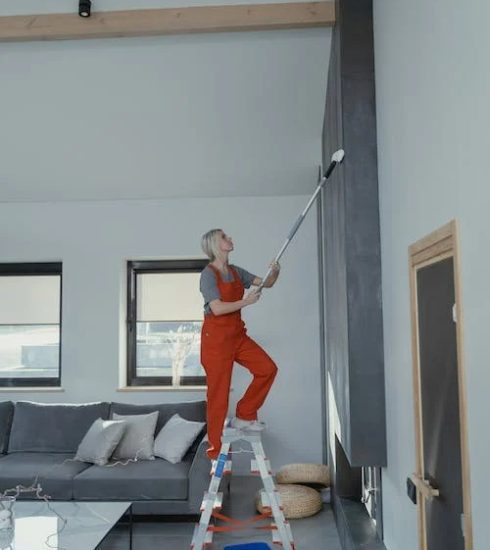A Guide to Structural Restoration in Adelaide
Are you a homeowner in Adelaide? It is well renowned for its rich history and diverse architectural landscape, which boasts a collection of buildings that embody its remarkable heritage and progress.
But since the passage of time and the impact of environmental elements can take a toll on these residential buildings and homes, it’s essential to undertake structural restoration.
As a homeowner in Adelaide, you are responsible for safeguarding its architectural legacy and unique character.
This guide contains the information on how to do that.
Understanding structural restoration
Structural restoration entails the vital task of addressing and rectifying any structural issues or damage that could compromise your beloved home’s stability, safety, and integrity.
This comprehensive process involves an assessment and subsequent repair or reinforcement of various structural components, including the foundation, walls, roofs, and other critical elements that may have been compromised over time.
Let’s delve into the factors contributing to these structural damages in Adelaide, uncovering the challenges homeowners may face.
Age and wear: Over time, the materials and components of a residential building naturally deteriorate. Environmental exposure, temperature fluctuations, and general wear and tear can weaken structural elements such as foundations, walls, roofs, and floors.
Environmental factors: Adelaide’s climate and environmental conditions, such as heavy rains, can contribute to structural damage.
Poor construction or design: Defects or flaws in the original construction or design of a residential building can contribute to structural issues. Inadequate materials, insufficient reinforcement, or improper installation of critical elements can lead to premature deterioration or weakness.
Subsidence and land movement: Adelaide, like many regions, experiences land movement due to geological factors. These movements can cause structural damage, particularly if the building’s foundation is not adequately designed or built to accommodate such movements.
Pest Infestations: Termites and other wood-destroying pests are a significant concern in Adelaide. If left unchecked, these pests can cause substantial damage to structural wood elements, compromising the stability of the building.
Lack of Maintenance: Neglecting regular maintenance and inspections can exacerbate underlying issues, escalating them into significant structural problems over time.
Steps to a successful structural restoration project
Now that you have an idea what structural restoration is, and have always been thinking about restoring the structure of your home, here are the steps to do it.
Step 1: Initial assessment and evaluation of the structure
To kick-start your restoration project, engaging a professional structural engineer well-versed in the region’s diverse building characteristics is crucial.
They will conduct a comprehensive assessment, considering factors such as age, environmental conditions, and local construction practices. By documenting and prioritizing the identified structural issues, you’ll have a solid foundation for your restoration journey.
Step 2: Determining the scope of the restoration project
Working closely with the structural engineer, you’ll determine the extent and urgency of the restoration project. You can do this while keeping the area’s unique challenges in mind.
Adelaide’s climate, soil conditions, and heritage preservation requirements may influence the restoration process. Through careful planning, you’ll develop a comprehensive restoration plan that addresses critical issues while considering your budget and timeline constraints.
Step 3: Planning and developing a restoration strategy
Adelaide boasts a rich architectural heritage, and it’s essential to preserve the unique character of your residential building. Tailor your structural restoration strategy to the area’s architectural styles, incorporating techniques and materials suitable for the local climate.
Collaboration with local authorities, such as heritage preservation boards or local councils, ensures compliance with regulations and preservation guidelines, safeguarding the distinct charm of your home.
Step 4: Execution and implementation of restoration techniques
Entrust the restoration work to experienced contractors who are well-acquainted with the intricacies of the area’s residential or commercial buildings.
Their expertise will shine through as they employ tailored restoration techniques to your home. From concrete repair to masonry restoration and heritage-sensitive practices, they’ll ensure the work progresses smoothly.
Stay in close communication with the restoration team to promptly monitor progress and address any unforeseen issues.
Step 5: Quality control and assurance during the restoration process
Maintaining quality control is paramount throughout the restoration journey. Regular inspections at key milestones verify that the work meets the required standards and requirements.
By seeking feedback from experts and professionals, you’ll ensure the high quality and effectiveness of the restoration work, leaving no room for compromise.
Step 6: Completion and final inspection of the restored structure
As the restoration work nears completion, a comprehensive final inspection is necessary to guarantee your Adelaide home’s safety, functionality, and aesthetic appeal.
For future reference, document the completed restoration work, including certifications, warranties, and maintenance recommendations. Emphasise the importance of ongoing maintenance and periodic inspections to preserve the structural integrity of your restored home.
The essence of addressing structural issues promptly
Addressing structural issues promptly is of utmost essence for homeowners, encompassing crucial aspects such as safety, financial implications, and overall well-being.
Structural problems like cracks, settlement, or deterioration can compromise a building’s stability, potentially leading to accidents or even collapses.
By addressing these issues, homeowners can proactively mitigate the potential dangers associated with structural deficiencies and create a secure and protected living environment for themselves and their loved ones.
Also, by taking immediate action on structural issues, you, as a homeowner, can help prevent further damage and the need for more extensive and costly repairs.
Small structural problems, when left unattended, tend to escalate into more severe issues that require extensive restoration work.
It also allows you, as a homeowner, to target the root causes, effectively stop the progression of damage, and steer clear of the overwhelming costs associated with extensive repairs down the line.
This not only saves you time and financial resources but also preserves the value of your home, enhancing its appeal to potential buyers if you decide to sell in the future.
With this foresight, you can safeguard your investments, alleviate unnecessary stress, and maintain the integrity of your commercial or residential property for years.






